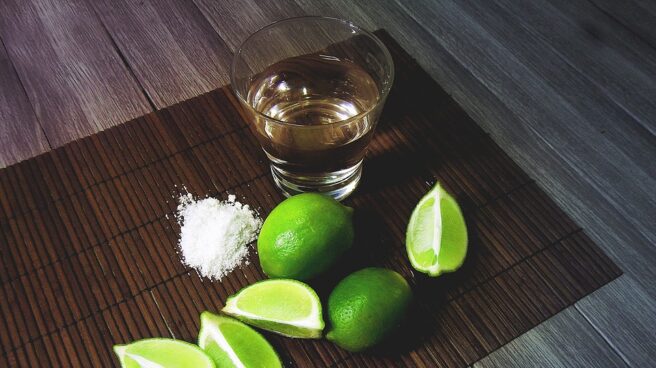

Alcoholic drink.

Tequila is in fashion state joined and it has already managed to dislodge whiskey from the second place among the most bought drinks of the North American giant. And the power across the Atlantic is setting the global trend and is visible in Spain, where it is also driven by the progress of the Mexican restaurant business. Here, it accounts for just 0.6% of the spirits market, but data from the sector’s employers’ association reflects a significant increase of 30% in the last year of this year. agave distillate.
“In the consumer market, the United States sets trends,” says Bosco Torremocha, director of Spirits of Spain, a federation that brings together almost the entire sector and brings together from big brands to small producers in the country. “North America is a dynamic sector with great added value and high competitiveness,” he elaborates, recalling that there tequila has become the second benchmark in value and third in volume, accompanied by his cousin mezcal.
And the race for the original drink from the state of Jalisco seems to have just begun. “Of course, spirits subject to aging have a clear upward trend worldwide and will continue to do so,” Torremocha adds.
There are several well-known faces in the US market who have launched their own brands of tequila on the market. For example, an actor George Clooney developed her tequila in 2013 casamigos, later acquired by British giant Diageo for $1 billion. and a few celebrities others followed in his footsteps. Among them is a former basketball player Michael Jordan.
From the Spanish federation they say they maintain a very good agreement with Tequila Regulatory Council. The drink passes quality control, geographical indication. “There’s an aging part to it that completes the product, with complex nuances in a beautiful process,” he says.
Spain was the third largest importer of tequila in the world in 2020, according to export data provided by Tequila Regulatory Council (CRT). In particular, Mexico exported a total of 2.8 million liters of tequila to our country. Due to the geographical indication, the Mexican drink cannot be produced in Spain, but it can be bottled for distribution in many other markets.
It was the spirits sector that also broke export records last year. 40% of everything produced in Spain goes outside our country. According to the economic report of the sector presented in the city of Huelva Jabugothe value of exports increased to 1,067 million euros (+24%), while the volume amounted to 131 million liters. The Philippines represent 72 million, Germany 48; Mexico, 42; and France, 31.
The Mexican drink cannot be produced in Spain, but can be bottled for distribution in other markets.
By type, liqueurs are the most exported, followed by brandy and spirits of wine, whiskey, rum, gin and vodka. Concerning consumption, all categories except brandy register growth above 4%.
He whiskey in 2022 it will grow by 8.9% and represents the most consumed category with a share of 24.5%. liqueurs they account for another 21.6%, and their consumption increased by 12.8%. Geneva accounts for 19.5% of the total, and also increased by 12.9%, while Ron (14.6%) grew by 15.2%. He brandy accounts for 8.7% of the market and remained stable in 2022. From my side, anise (5.6%) grew by 6.1%, and vodka (4.2% of the market) increased by 9.8%. also increased Hit with a fist.
According to Torremocha, the market in Spain facilitates the presence of many players and “ensures very healthy competition in a very strong and structured sector.” In this sense, he says that there are more and more opportunities for consumption and that this does not mean that some categories replace others. you pierced the bubble Geneva? “No way. There is enough space for everyone,” he sums up.
Liquor consumption reached 197 million liters in 2022, representing an increase of 19.4% compared to 2021 and a figure very close to 210 million in 2019, the last year before the arrival of the coronavirus.
Similarly, the director of the association highlights the rise in popularity of a classic drink such as anise. As a result of the pandemic and its use in homemade desserts, consumption appears to have increased. They are also improving their presence in the spirits markets such as there will be pacharan. Of course, Torremocha remembers that all these liqueurs must be correctly labeled and in their original packaging, as is the case with olive oil, which is served in catering establishments.
new marking
It was the federation that took advantage of its national congress in Habugo to introduce a new digital label that will make available to the consumer nutrition facts drinks, health information, and sustainability. The new system will include a complete ingredient list for its products, and the label will also include a QR code that will provide additional information.
With this commitment to self-regulation to be implemented gradually, the Spanish industry appears to be envisioning a move by the Irish government that is preparing a new law for all alcoholic beverages to include calorie content and warnings about their health risks on the label as of 2026. health. This is a pioneering measure worldwide.
“Each time companies request new labels, they will already include this information and ensure that they are compatible with the implementation cases of companies with transnational labeling platforms,” the Spanish organization said in a statement.
In addition to spirits, the European Committee of Wine Companies (CEEV), representing the sector, filed a formal complaint last week with European Commission (EU) v. Irish country.
Source: El Independiente